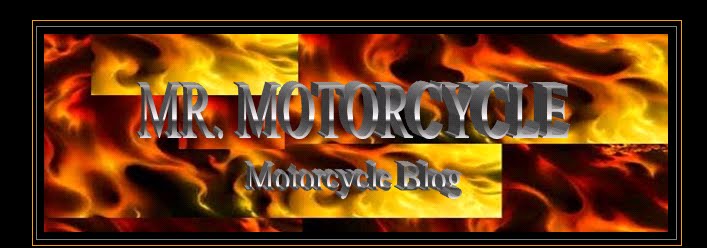Friday, August 22, 2008
DOT Vs. Snell approved helmets
What is the difference between Snell and DOT approved helmets?
This is really interesting. I thought you should know.
First off, for this post anyway (SMF) will refer to the Snell Memorial Foundation, NOT Stupid Mother F*cker. LOL!
There are two key differences between a DOT and Snell approved helmet.
First, is the testing standards the helmets go through, and second, is the verification of the results.
The Snell Memorial Foundation (SMF) was founded in 1957 just after William Snell, A.K.A. Pete, died from massive head trauma from a race car accident. (SMF) is a non-profit organization that focuses on learning more about the components of head injuries, & how to prevent them by using helmets. Through their research (SMF) has developed the Snell standard for approving helmets. It is continually tested and updated every five years.
Although both testing processes are very similar, (SMF) requires their certified helmets to withstand a greater impact and absorb more force than the DOT approved helmets.
Both (SMF) and DOT standards drop the head forms on flat and round shaped anvils in order to simulate different types of impacts. However, Snell also uses an edged anvil that specifically tests the integrity of the helmet's shell.
DOT and Snell test each helmet two times at four different impact zones. DOT drops their helmets from 6 feet on the flat anvil and from a 4.5 feet on the round anvil. Snell drops the helmets from 10 feet and 7.5 feet on both anvils, which simulates a more severe impact.
While there is no guarantee that a DOT approved helmet has actually been tested, the purchase of a Snell approved helmet ensures that the product has been evaluated under scrutiny. A Snell-certified helmet also meets and exceeds the DOT standards.
This is really interesting. I thought you should know.
First off, for this post anyway (SMF) will refer to the Snell Memorial Foundation, NOT Stupid Mother F*cker. LOL!
There are two key differences between a DOT and Snell approved helmet.
First, is the testing standards the helmets go through, and second, is the verification of the results.
The Snell Memorial Foundation (SMF) was founded in 1957 just after William Snell, A.K.A. Pete, died from massive head trauma from a race car accident. (SMF) is a non-profit organization that focuses on learning more about the components of head injuries, & how to prevent them by using helmets. Through their research (SMF) has developed the Snell standard for approving helmets. It is continually tested and updated every five years.
Although both testing processes are very similar, (SMF) requires their certified helmets to withstand a greater impact and absorb more force than the DOT approved helmets.
Both (SMF) and DOT standards drop the head forms on flat and round shaped anvils in order to simulate different types of impacts. However, Snell also uses an edged anvil that specifically tests the integrity of the helmet's shell.
DOT and Snell test each helmet two times at four different impact zones. DOT drops their helmets from 6 feet on the flat anvil and from a 4.5 feet on the round anvil. Snell drops the helmets from 10 feet and 7.5 feet on both anvils, which simulates a more severe impact.
While there is no guarantee that a DOT approved helmet has actually been tested, the purchase of a Snell approved helmet ensures that the product has been evaluated under scrutiny. A Snell-certified helmet also meets and exceeds the DOT standards.
Labels:
bike helmet,
D.O.T.,
DOT,
helmets,
motorcycle helmets,
SMF,
Snell
Subscribe to:
Post Comments (Atom)


























15 comments:
Great post. Thanks for the info. The helmet I wear right now is a full face and is DOT and Snell approved, but I never really knew what it all meant. When I get my own bike I want to go with either a half or 3/4 helmet, so this info will be usefull when I go looking for one. Thanks again!
So, I'm hopeful that your helmet (which you will wear all of the time) will be Snell approved. Or, we could get doors for the Harley... your choice ;)
--TheWife
LMFAO!!! I love your wife's comment! :) I'm guessing she doesn't ride?
Thanks for posting this, Mr. M. I will be in the market for a helmet as soon as I go back to work. I'm hoping to find a halfshell that's Snell approved.
Thanks for the info. I didn't realize that, but the Snell approved products sound like they're a little more tested and safer (if that's possible). It nice to be aware.
Thanks for the info. A Snell approved helmet saved my life. No joke. DOT helmets are not even inspected. If a manufacturer says they are in compliance, it's just assumed they are. It's sort of an honor system.
Excellent topic Mr M! I have always wanted to either post about this myself or read a post about it. I was surprised when our Head Road Captain told me the difference. I thought I was pretty safe wearing a DOT approved helmet. My next helmet will be SNELL certified.
I used to go lidless in Tx. but I know live in a mandatory helmet state and have got used to it. I even wear a Snell certified full-face helmet on longer rides because it seems to reduce fatique from wind blast and I wear it when it's really cold, a lot warmer than my 3/4 helmet!
Very informative; I knew nothing about this. I always thought DOT was the final word - I've never heard or seen anything about Snell any place before now. Maybe Snell isn't greasing the Massachusetts politicians enough and they don't have them here? I'm going to start looking around for Snell from now on and see what I can find.
For all who thanked me for the information, well that is what friends are for. When we find something good, we gotta share.
I just recently found out what the differences were myself when doing helmet research, in my quest to find what is right for me.
Thanks for posting this!!! I need to buy a 3/4 helmet for the BRC, and the half-helmet I have now has been dropped several times. Not by me of course, by my father-in-law's crazy ex-- don't ask... LONG story. Anyway!! Thanks again!! I need to keep a sharper eye out for Snell, so far I've only seen DOT.
The hardest part of Snell is finding them.
As far as states that mandate helmets, has anyone had any issue using a DOT approved helmet? Or will I receive a ticket for using DOT approved only? Anyone know more about this and the specific states requirements?
I'm located in Florida if anyone's up to date on that law...
Thanks! :)
Craig,
Florida's law: Motorcycle Vehicle Safety Standard 218....,
http://frwebgate.access.gpo.gov/cgi-bin/get-cfr.cgi?TITLE=49&PART=571&SECTION=218&YEAR=1998&TYPE=TEXT
including it's amendments: http://home.tampabay.rr.com/ourplace/Biker/amenment.htmFederal
clearly state that the helmet must be DOT approved.
A question that might need to be asked is whether the extreme-impact performance of Snell certified helmets make them safer for mild- to medium-impact crashes, which are more common on the street. Some studies have been done to compare DOT-only versus Snell/DOT approved helmets in a more normal range of impacts, and DOT-only helmets perform better. So watch out, the DOT-only approved helmets are quite possibly safer AND cheaper!
Here is the abstract of a paper about these studies:
http://pubsindex.trb.org/view.aspx?id=880767
Here's a whole paper if you've got the patience (or just skip to the discussion):
http://www.snellfoundation.net/articles/hic/Conflicts_of_helmet_stds_AAAM_1992.pdf
-Mel
Thanks for chiming in Mel.
Post a Comment